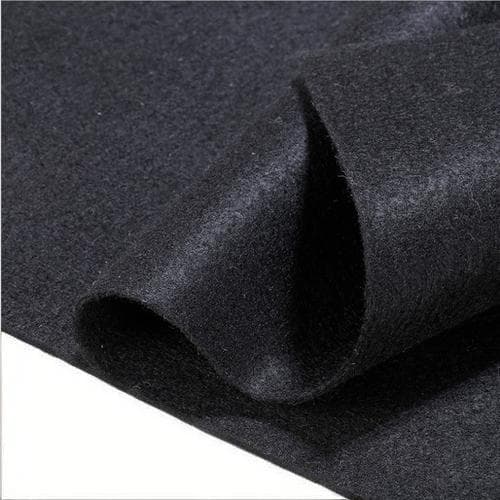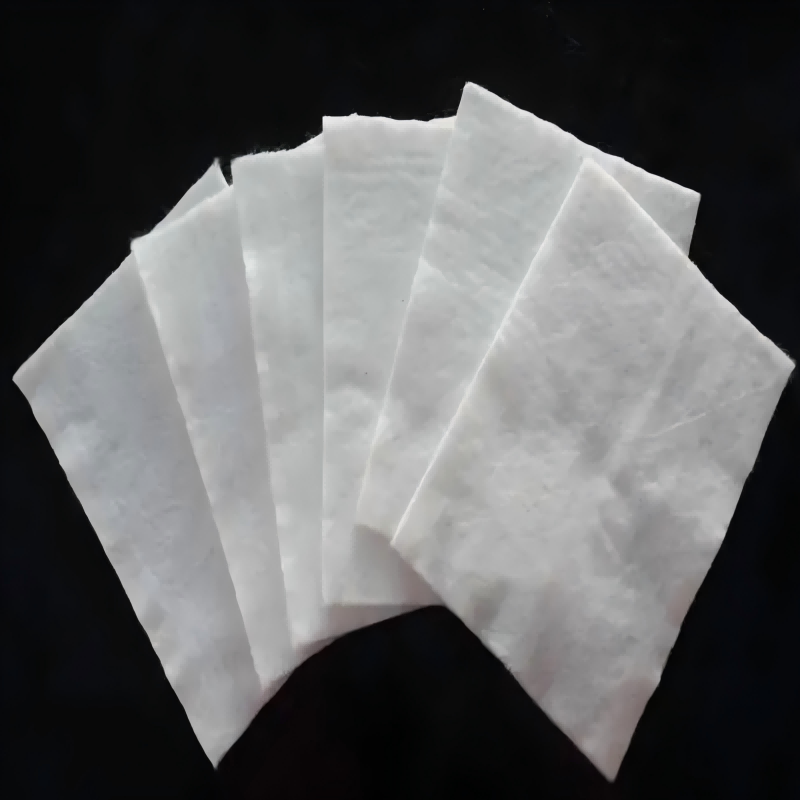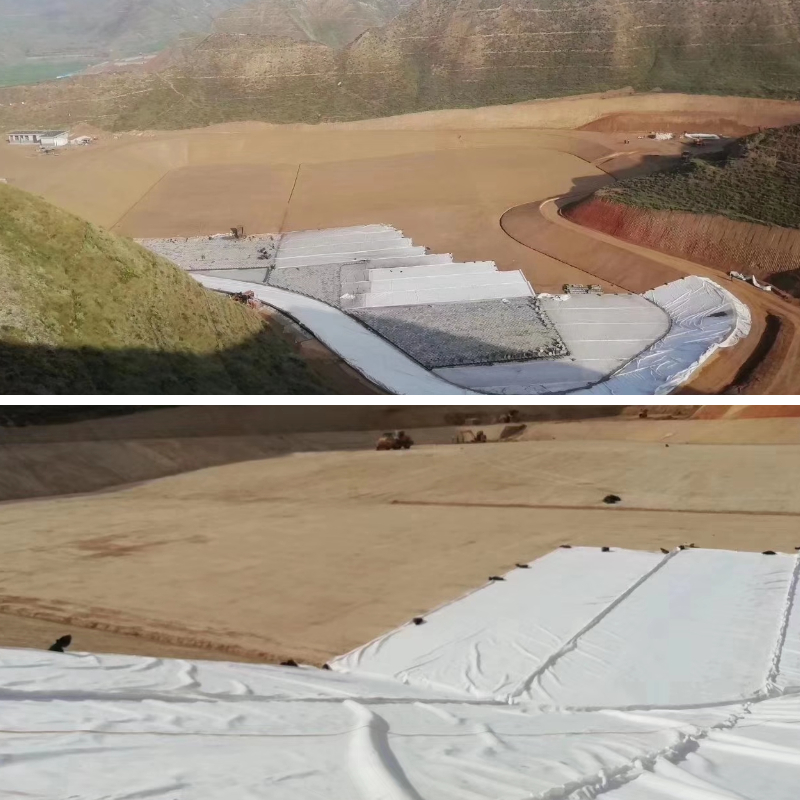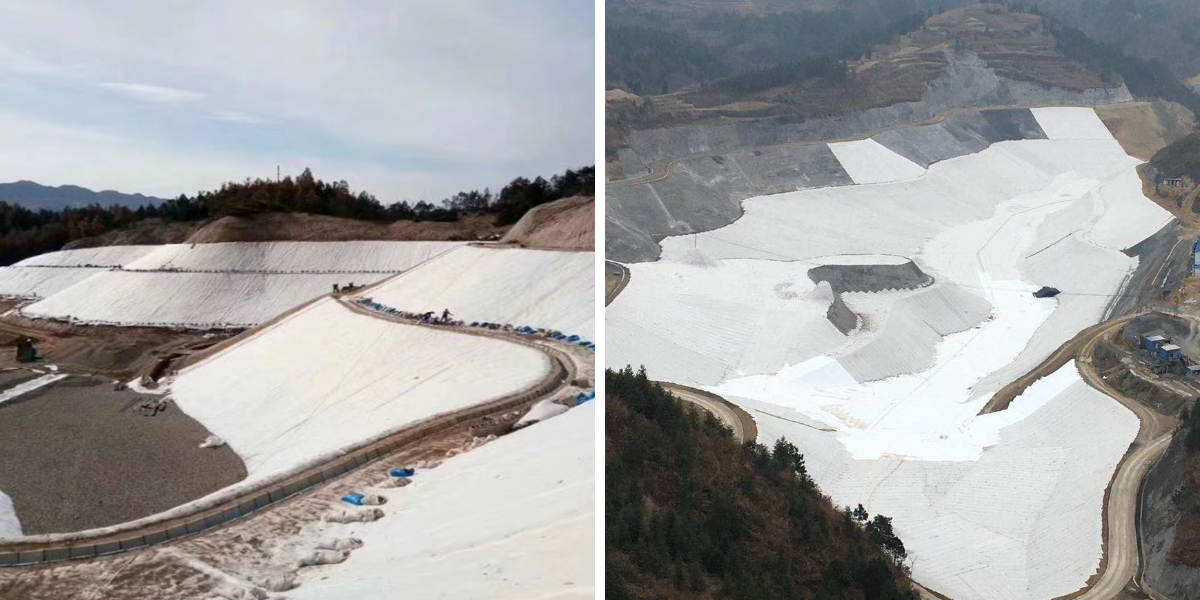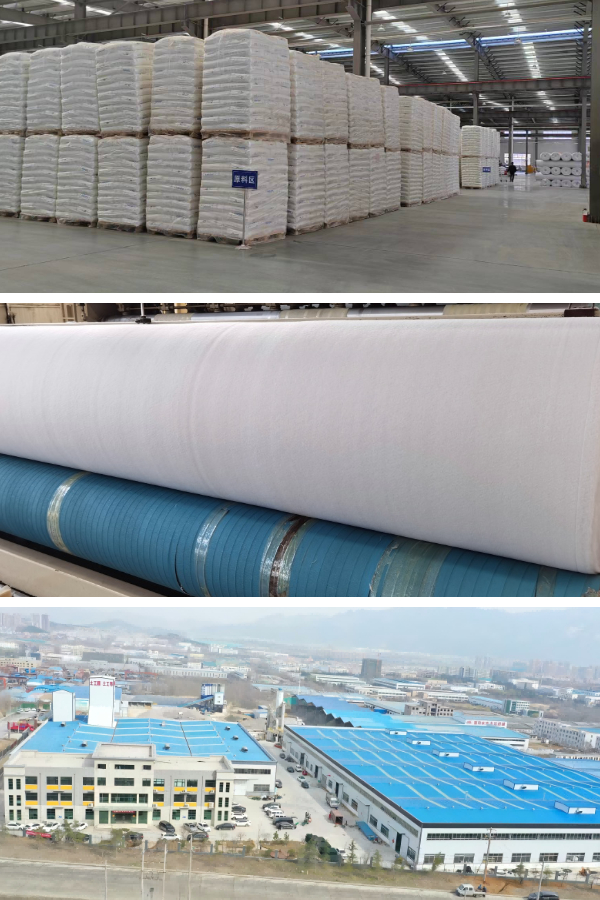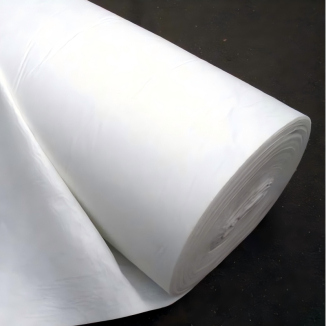Black Geotextile
1. Enhance foundation stability: Improve soil bearing capacity and prevent uneven settlement.
2. Efficient filtration and drainage: prevent soil erosion while ensuring smooth water flow.
3. Isolate different materials: avoid mixing soil layers and maintain structural integrity.
4. Convenient construction: lightweight, easy to cut and lay, reducing construction costs.
5. Environmental Economy: Reduce the use of traditional stone and sand, lower engineering costs, and minimize environmental impact.
Product Introduction:
Black Geotextile is a permeable flat material made from synthetic fibers such as polyester PET and polypropylene PP through needle punching, weaving, or thermal bonding processes. The finished product is in the form of cloth, with a width of usually 4-6 meters and a length of up to 50-100 meters. Some products have a width of up to 9 meters. According to different processes, it can be divided into:
Non woven geotextile : The fibers are randomly arranged, with high porosity and strong flexibility, suitable for filtration and drainage.
Woven geotextile : The fibers are interwoven according to latitude and longitude, with stable structure and high tensile strength, suitable for reinforcement and strengthening projects.
Composite geotextile: It is composite with materials such as geomembrane and geogrid, and has multiple functions such as anti-seepage, reinforcement, and drainage.
Core Features
1. High strength and durability
High tensile strength, capable of withstanding complex stresses during construction and use periods (such as slope reinforcement, retaining wall backfilling).
Resistant to chemical corrosion, UV radiation, and microbial erosion, it can maintain stable performance even in acidic and alkaline environments or long-term exposure.
Strong wear resistance, not easily broken, suitable for high stress scenarios such as railway embankments and airport runways.
2. Permeability and filtration function
The gaps between fibers allow water flow to pass through while intercepting soil particles to prevent soil erosion (such as embankment slope protection and reservoir drainage).
It can form a flat drainage channel to guide and discharge pore water or seepage water, and relieve water pressure (such as around tunnels and underground structures).
3. Isolation and protection function
Isolate materials with different physical properties (such as soil and sand, concrete and soft foundation) to prevent mixing and maintain structural functionality (such as highway subgrade, landfill liner).
Buffer external impacts, protect waterproof materials (such as geomembranes), and extend the service life of the project.
4. Construction convenience
The material is lightweight, flexible, easy to transport, lay, and cut, suitable for complex terrains such as irregular foundation surfaces and slopes.
Multiple connection methods such as overlap, stitching, and welding can be used to ensure sealing.
Product Parameters:
project | metric | ||||||||||
Nominal strength/(kN/m) | |||||||||||
6 | 9 | 12 | 18 | 24 | 30 | 36 | 48 | 54 | |||
1 | Longitudinal and transverse tensile strength / (kN/m) ≥ | 6 | 9 | 12 | 18 | 24 | 30 | 36 | 48 | 54 | |
2 | Maximum elongation at maximum load in longitudinal and transverse directions/% | 30~80 | |||||||||
3 | CBR top penetration strength /kN ≥ | 0.9 | 1.6 | 1.9 | 2.9 | 3.9 | 5.3 | 6.4 | 7.9 | 8.5 | |
4 | Longitudinal and transverse tearing strength /kN | 0.15 | 0.22 | 0.29 | 0.43 | 0.57 | 0.71 | 0.83 | 1.1 | 1.25 | |
5 | Equivalent aperture O.90(O95)/mm | 0.05~0.30 | |||||||||
6 | Vertical permeability coefficient/(cm/s) | K× (10-¹~10-), where K=1.0~9.9 | |||||||||
7 | Width deviation rate /% ≥ | -0.5 | |||||||||
8 | Unit area mass deviation rate /% ≥ | -5 | |||||||||
9 | Thickness deviation rate /% ≥ | -10 | |||||||||
10 | Thickness coefficient of variation (CV)/% ≤ | 10 | |||||||||
11 | Dynamic perforation | Puncture hole diameter/mm ≤ | 37 | 33 | 27 | 20 | 17 | 14 | 11 | 9 | 7 |
12 | Longitudinal and transverse fracture strength (grab method)/kN ≥ | 0.3 | 0.5 | 0.7 | 1.1 | 1.4 | 1.9 | 2.4 | 3 | 3.5 | |
13 | Ultraviolet resistance (Xenon arc lamp method) | Longitudinal and transverse strength retention rate% ≥ | 70 | ||||||||
14 | Ultraviolet resistance (fluorescence UV lamp method) | Longitudinal and transverse strength retention rate% ≥ | 80 | ||||||||
Product Applications:
1. Water conservancy engineering
Laying anti-seepage and filter layers for dams and channels to prevent dam leakage and piping;
Used for slope protection in river regulation to reduce damage to riverbanks caused by water flow erosion.
2. Transportation Engineering
As an isolation layer in the roadbed of highways and railways, it avoids mixing of different soil layers and enhances the stability of the roadbed;
Strengthening the pavement base to reduce pavement settlement and cracking;
As a drainage layer in tunnel engineering, it guides the seepage of surrounding rock.
3. Municipal engineering
The anti-seepage and filtering layers of urban sewage treatment plants and landfills prevent the infiltration of pollutants;
Used for drainage and soil reinforcement in underground pipe galleries and foundation pit engineering.
4. Environmental Protection and Ecological Engineering
As a soil protection layer in artificial wetlands and vegetation restoration projects, it promotes plant growth;
It is used for erosion prevention and ecological restoration in coastal protection and mudflat management.
5. Mining Engineering
The anti-seepage and filtration of mine tailings dams to prevent tailings leakage from polluting the environment;
Used for soil improvement and structural reinforcement during mining area reclamation.
Geotextile has become an indispensable material in modern civil engineering due to its excellent physical and mechanical properties, multifunctionality, and economy. It is widely used in various fields such as water conservancy, transportation, and municipal engineering, and plays an important role in improving engineering quality, reducing costs, and protecting the ecological environment. With the development of technology, the research and development of new geotextiles will further expand their application scope.


